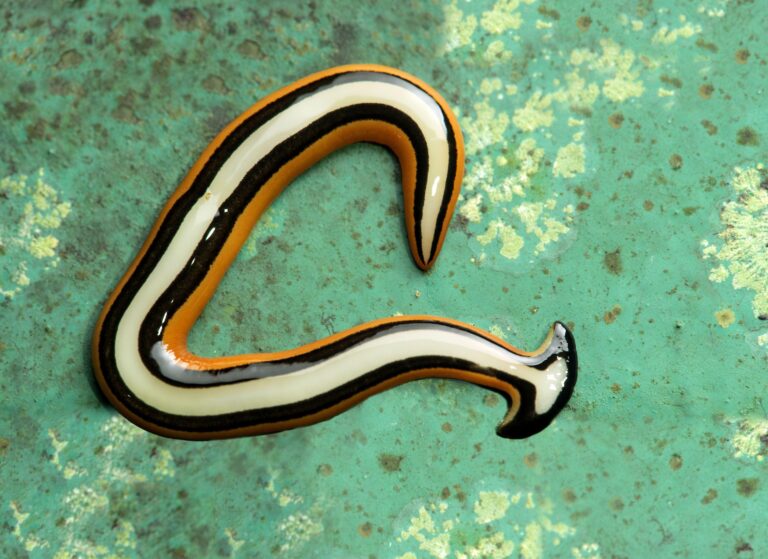North Texas Faces Growing Challenge from Invasive Hammerhead Worms
Emergence of Hammerhead Worms in North Texas Communities
Communities throughout North Texas have recently reported an uptick in sightings of hammerhead worms, an invasive flatworm species distinguished by their unique hammer-shaped heads. These non-native predators threaten the regionŌĆÖs native earthworm populations, which are vital for maintaining healthy soil ecosystems. Although harmless to humans and pets, hammerhead worms can cause significant ecological disturbances if their spread is not controlled.
Residents are encouraged to take the following safety measures when encountering these worms:
- Avoid direct contact. Always use gloves or tools to handle the worms, as they produce a toxic mucus that can irritate skin.
- Secure and dispose properly. Place the worm in a sealed container and euthanize it by soaking in rubbing alcohol or vinegar to prevent survival and reproduction.
- Notify authorities. Report any sightings to local environmental agencies or agricultural extension services to assist in monitoring and managing their spread.
| Feature | Details |
|---|---|
| Length | Typically 4 to 12 inches |
| Color Variations | Ranges from dark brown and black to iridescent shades |
| Preferred Habitat | Moist soils, gardens, wooded areas |
| Ecological Threat | Predation on native earthworms, disrupting soil health |
Recognizing Hammerhead Worms: Distinctive Traits and Behavior
Hammerhead worms are notable for their elongated bodies that culminate in a broad, triangular head resembling a hammer. Unlike common earthworms, their skin is smooth and glossy, exhibiting colors from reddish-brown to olive green or shimmering black. These worms are surprisingly swift, gliding fluidly across surfaces as they hunt for prey, often found beneath damp debris, logs, or leaf litter, especially following rainfall.
Unlike earthworms, hammerhead worms are carnivorous, feeding on native soil invertebrates and earthworms, which can destabilize local ecosystems. They also secrete mild toxins when threatened, making bare-hand contact unsafe. Key identification markers include:
- Hammer-shaped, broad head: a unique triangular form.
- Glossy, slick body: often dark or iridescent in color.
- Rapid, serpentine movement: noticeably faster than typical earthworms.
- Habitat preference: moist, shaded environments rich in organic matter.
| Trait | Description | Additional Notes |
|---|---|---|
| Body Shape | Long with a flat, triangular head | Distinctive for species identification |
| Color | From reddish-brown to dark green, shiny | Varies by age and environment |
| Movement | Fast, smooth gliding | Enables quick hunting and evasion |
| Feeding Behavior | Predatory on native earthworms | Contributes to soil ecosystem disruption |
Ecological Consequences and Hazards of Hammerhead Worm Infestation
The invasion of hammerhead worms poses a significant threat to North TexasŌĆÖs soil ecosystems by preying heavily on native earthworms, which are essential for soil aeration, nutrient recycling, and plant health. A decline in earthworm populations can lead to degraded soil quality, reduced fertility, and impaired plant growth, ultimately affecting the entire food chain that depends on healthy soil environments.
In addition to ecological damage, these worms present health concerns due to their toxic mucus secretions, which can cause skin irritation in humans and pets. Their ability to reproduce rapidly and regenerate from small body fragments complicates eradication efforts, making early detection and management critical. Primary concerns include:
- Reduction of beneficial earthworm populations vital for soil structure
- Disruption of native biodiversity and ecosystem stability
- Potential skin irritation from contact with toxic secretions
- Challenges in control due to prolific reproduction and regeneration
| Impact Area | Effect |
|---|---|
| Soil Quality | Degradation from loss of earthworm activity |
| Biodiversity | Decline in native species diversity and ecosystem imbalance |
| Human and Pet Safety | Risk of irritation from toxic mucus |
| Control Efforts | Complicated by regeneration and rapid reproduction |
Recommended Actions and Reporting Procedures for Hammerhead Worm Encounters
Upon discovering a hammerhead worm, avoid direct skin contact due to their toxic secretions. Use gloves or a tool to carefully capture the worm and place it in a sealed container. Do not release it back into the environment, as this could exacerbate the infestation. After securing the specimen, promptly report the sighting to local environmental or agricultural authorities who monitor invasive species.
For assistance or to report a hammerhead worm sighting, contact:
- Texas A&M AgriLife Extension Service: Provides expert guidance on invasive species management through local offices and online resources.
- Dallas County Agricultural Department: Tracks regional invasive species and coordinates response efforts.
- Texas Parks and Wildlife Department: Offers statewide resources for managing invasive wildlife threats.
When reporting, include the following details to aid monitoring:
| Date of Observation | Location (City, Neighborhood) | Description (Size, Color) | Action Taken |
|---|---|---|---|
| MM/DD/YYYY | Example: Frisco, residential garden | 6 inches, glossy black with hammer-shaped head | Captured and reported |
Final Thoughts: Protecting North Texas from Hammerhead Worms
As hammerhead worms continue to spread across North Texas, vigilance and prompt reporting are essential to curbing their impact. While these invasive flatworms threaten native soil ecosystems, informed identification and responsible handling can significantly reduce their proliferation. For further guidance on managing hammerhead worm encounters, visit the Dallas News website or reach out to your local extension office. Staying educated and proactive is crucial to preserving the health and biodiversity of North TexasŌĆÖs environment.







